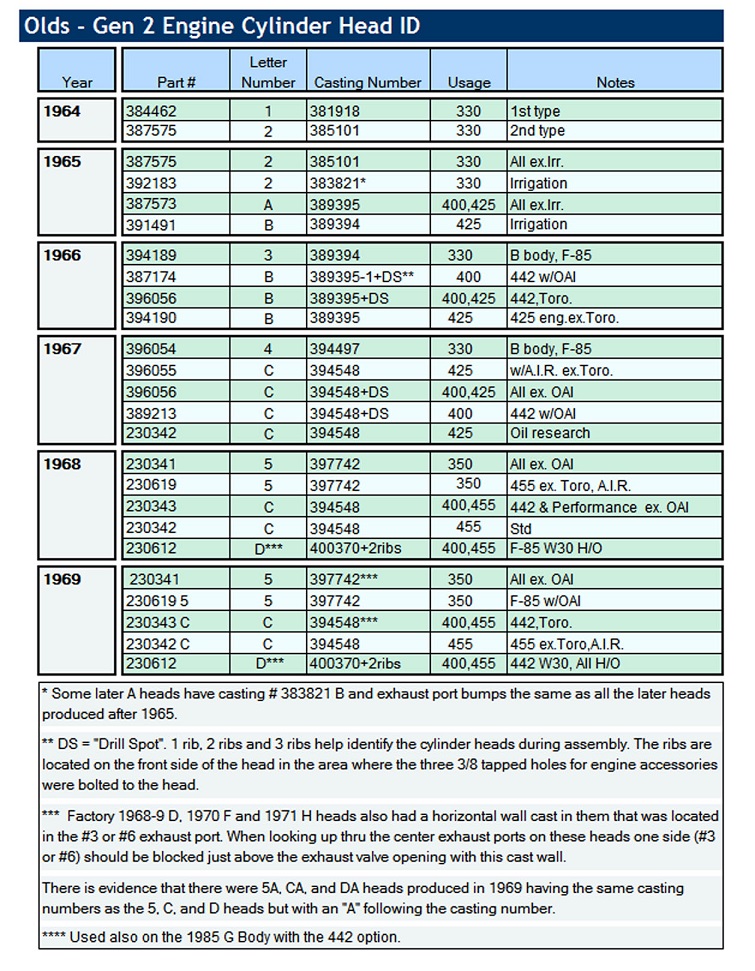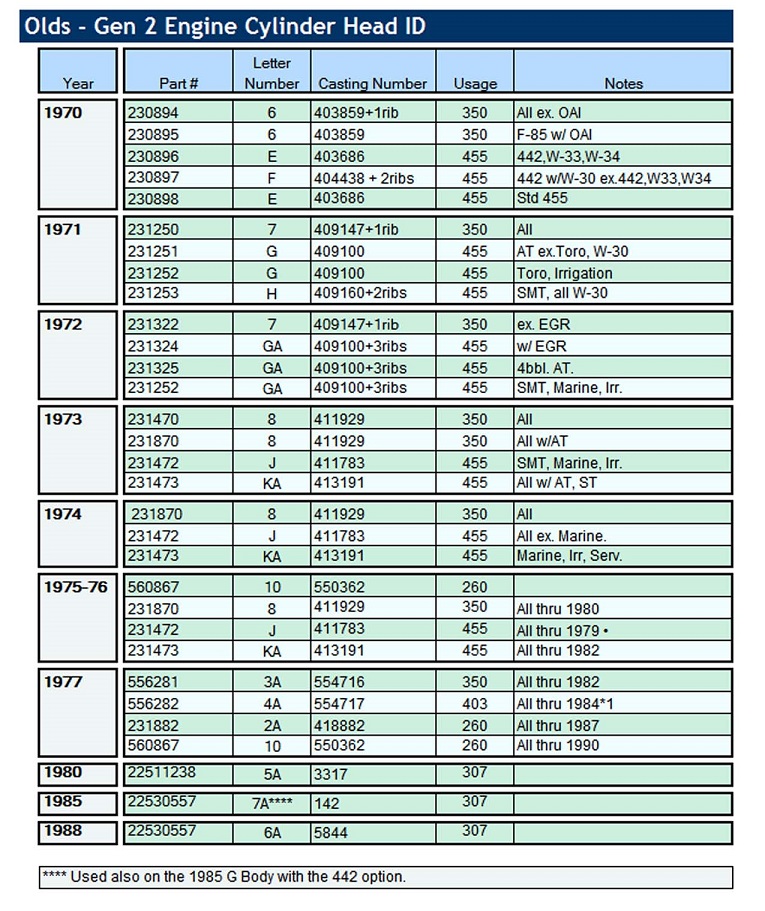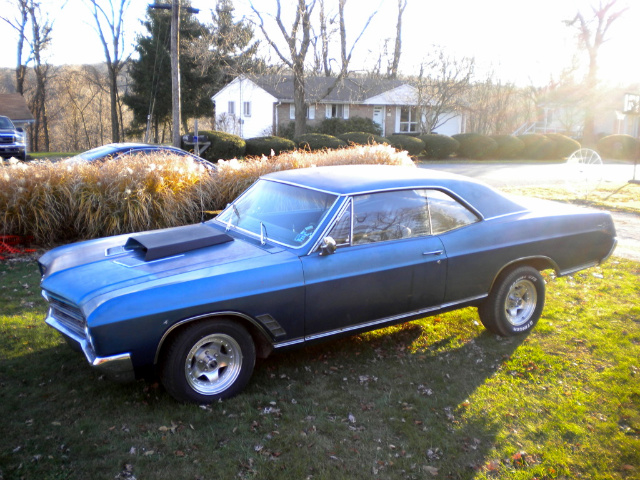
watch the video
"Its a factory 1972 402 bored .030 to 408. 11:1 compression with 215 closed chamber ovals with a valve job and bowl work. The cam is an isky hydraulic, but I dont have all the specs(I didn't build the short-block and the cam was already in). Previous owner seems to recall high 230's at .050, roughly 290 advertised with .550 lift. It gets up to 6500 quick, so it feels like those specs should be ballpark.
The intake is an edelbrock performer with a 650 double pumper on it now. Next spring will be a performer rpm, and Im swapping out the main body for a 750 holley HP main body. I've tried a larger carb, and this thing really wants at least a 750. The top end charge is much much better(even after jetting the 650).
The trans is a TH 400 with a 10 inch converter that stalls about 4k....and the rear is a 12 bolt, Eaton posi, Yukon 30 spline axles, and 5.13 Richmond gears. Next year Im putting in either 3.73's or 4.10s. And, headman 1.75 long tube headers."
GRUMPYVETTE"
That cars looks and sound bring back a lot of memories of the type of cars many of us drove in the muscle car era.
most of us could not afford to buy a fully optioned chevelle or corvette, but we could buy used cars and do engine swaps, remember back then a complete 1970 454 with 450hp could be found for under $1400 at some chevy parts counters, and salvage yards had 396 engines fairly frequently,
engine swaps were fairly common at least in my area, and you could generally buy a mid 1960s thru mid 1970s Pontiac tempest, or le mans,Buick skylark,or olds f85 etc. mid size for less than a chevelle and stick a big block Chevy and once you swapped a decent transmission in one it would easily keep up with or beat the factory hot rods"
GREG
thats exactly why I own this one! The car that really turned me on to hot rodding was my dads 67 SS 396 four speed el camino. Unfortunately....when he had it I was probably only 5 years old(by the time he sold it) and I was scared of the thing(just too young at the time). He started working on a 51 dodge pickup. Total custom job with small block chevy power. That truck grew on me(still got it decades later), but it was never "fast". By the time I started appreciating fast muscle cars, I really wished he still had the elky. It just worked out that either a 67 chevelle or el camino became a "must have" car for me because of the memories of that one.
Unfortunately, I couldnt afford the top dollar price tag those cars command, so at the time....I settled for a comparable A body car of that era that I thought had potential. Now, Im glad I did. In the end, its almost finished the way I want, and its unique. I can pretty safely say there is only one like it out there.
Plus, since the car was only partially what I wanted....it pretty much forced me to build the entire thing front to back if I ever wanted it to be the way Id imagined.
With most projects, I prefer to buy something thats leaning pretty well towards what I want it to be as a finished product. That way...the work involved isnt as great of a task to get it where it needs to be. But, there is a different level of appreciation for the finished product when basically the entire thing gets gutted and built to your own spec, as opposed to just finishing something thats already there. Thats why this build took so long. It was a perfectly good car the way it was, so I was always reluctant to start transforming it. Not to mention the cost. But Im glad I finally got to it and took care of it and made it "my car".
OLDS ENGINE INFO
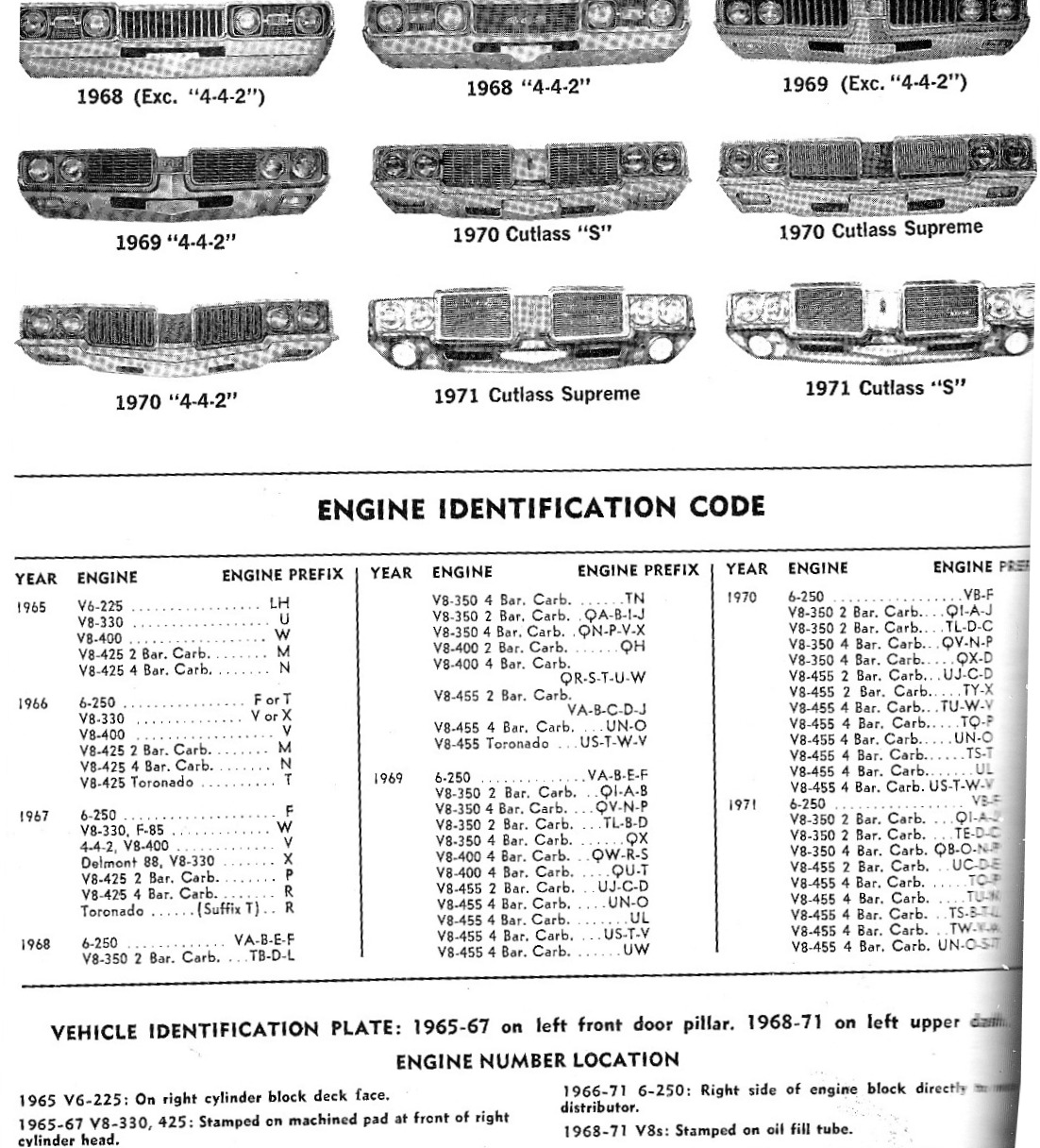
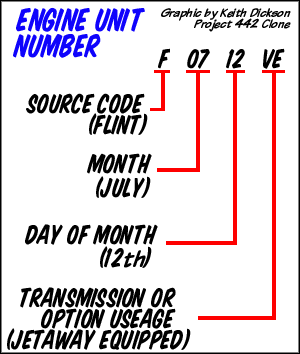
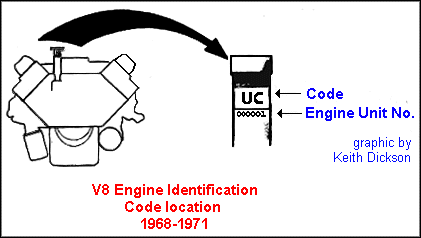

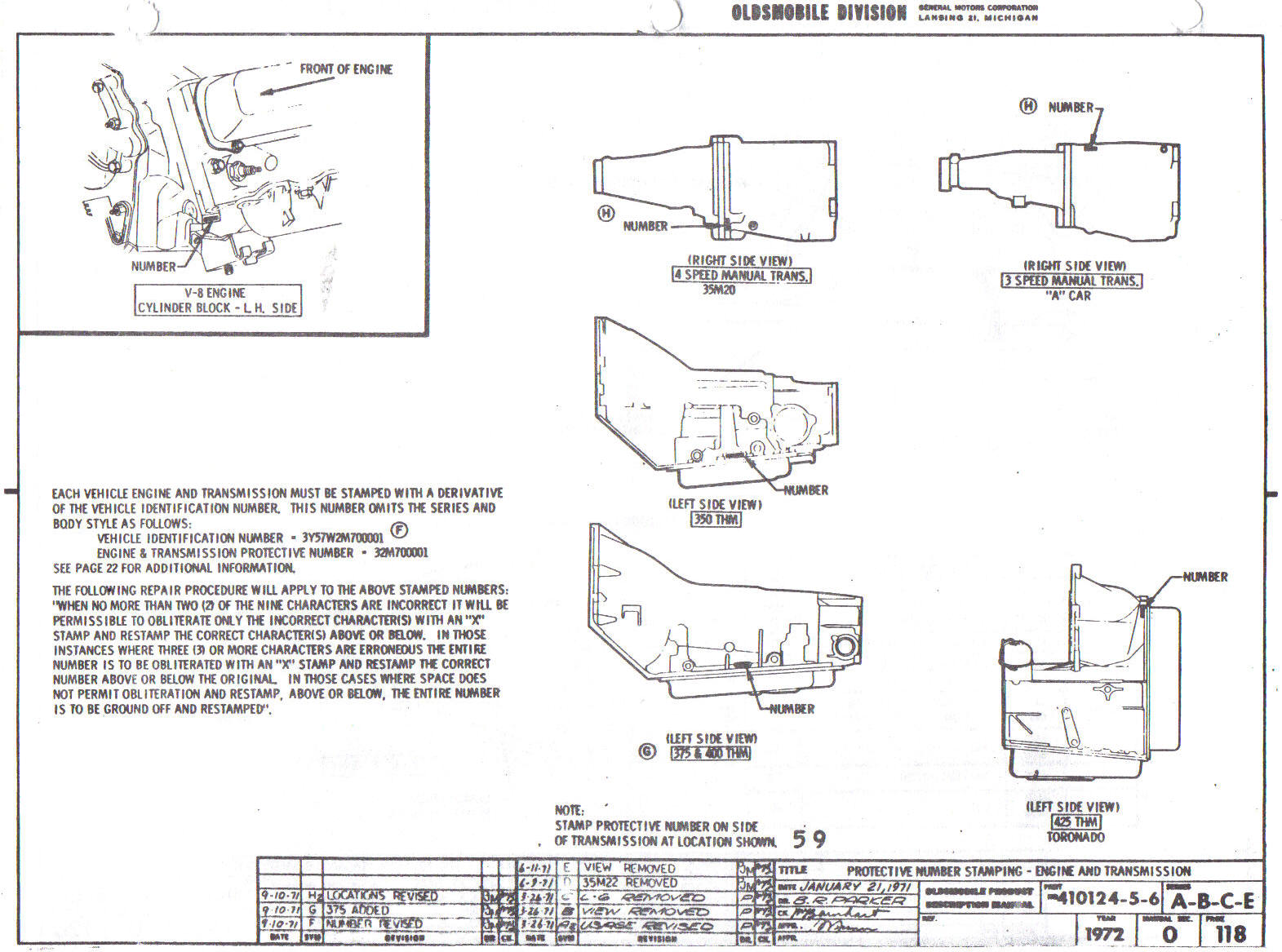

OLDS CASTING NUMBERS
http://www.442.com/oldsfaq/ofblk.htm
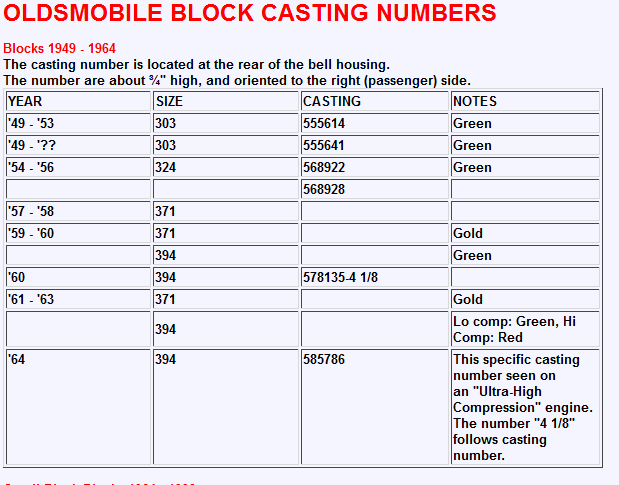
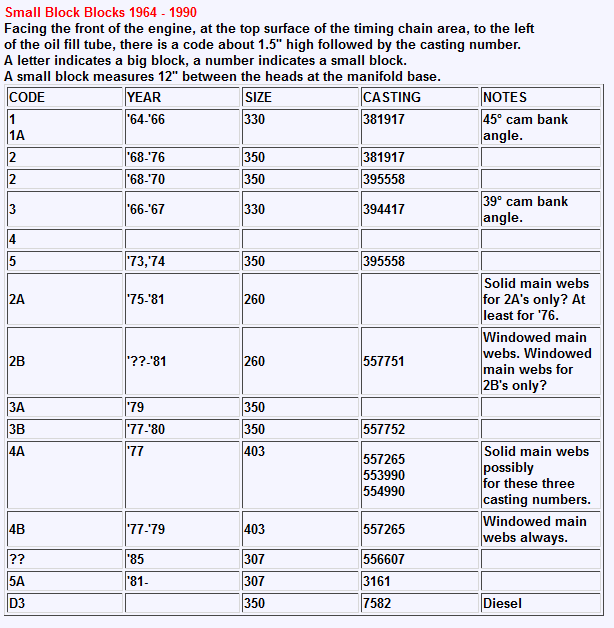
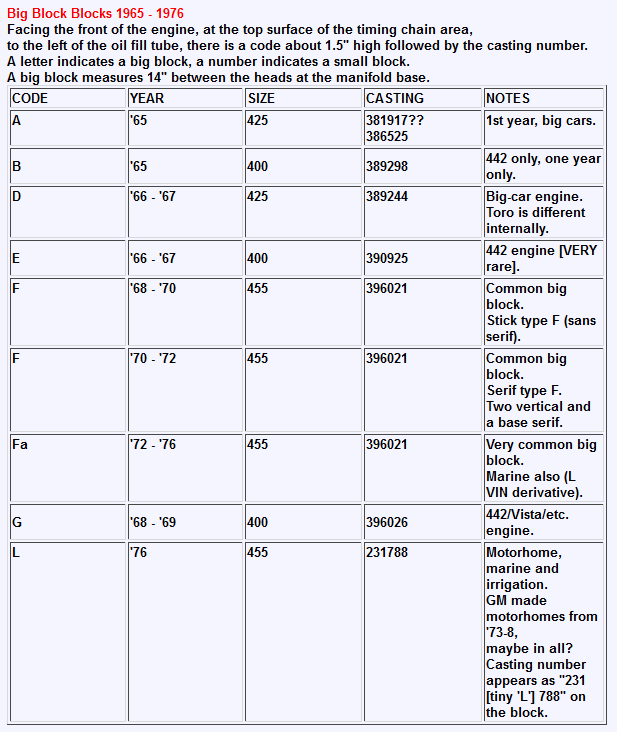
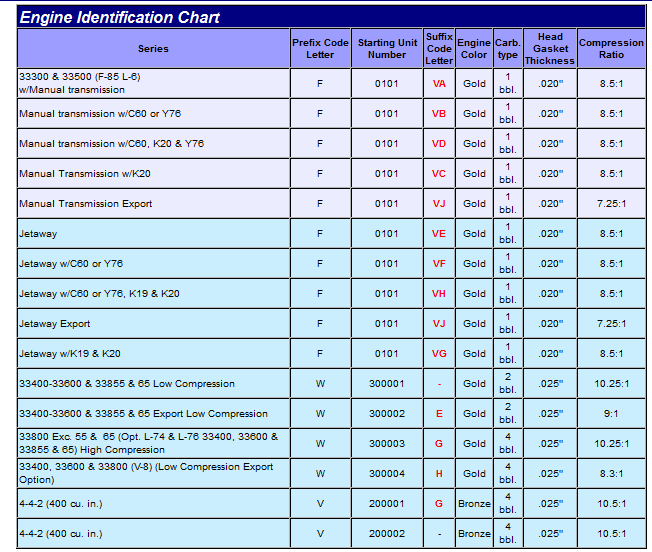
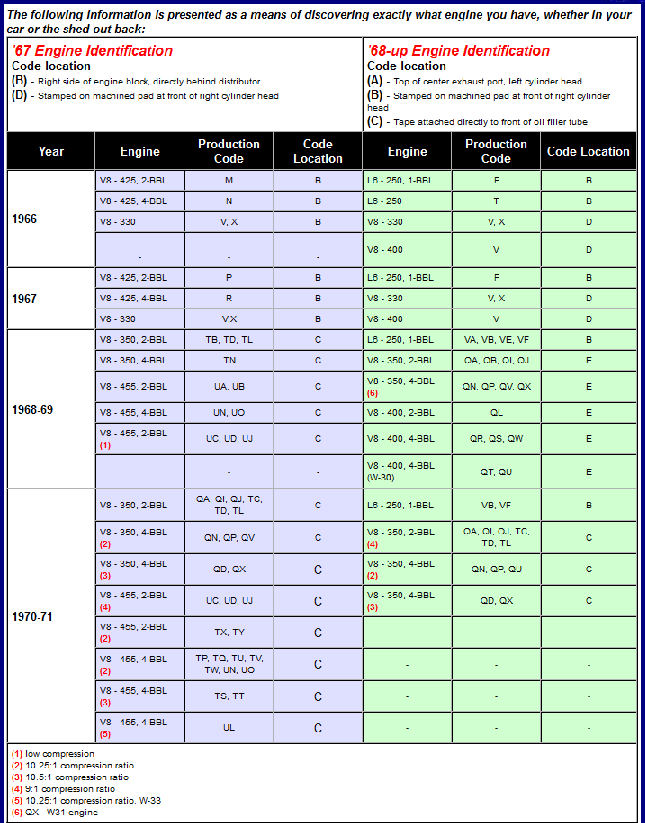
http://www.hotrod.com/cars/barn-finds/116-9906-guide/
http://classicoldsmobile.com/forums...-photos-casting-number-locations-engines.html
https://quincyolds455.wordpress.com...ify-a-big-block-olds-from-a-small-block-olds/
http://www.442.com/oldsfaq/ofhed.htm
http://brianesser.com/technical-information/casting-numbers/
sgt art said:ID/ Casting
Code Year(s) CID Number Notes
1 '64-'66 330 381917 45° cam bank angle.
1A 330 381917 45° cam bank angle.
2 '68-'76 350 381917
2 '68-'70 350 395558
3 '66-'67 330 394417 39° cam bank angle.
4
5 '73,'74 350 395558
2A '75-'81 260 Solid main webs for 2A's only? At least for '76.
2B ??-'81 260 557751 Windowed main webs. Windowed main webs for 2B's only?
3A '79 350
3B '77-'80 350 557752
4A '77 403 557265 Solid main webs possibly
553990 for these three
554990 casting numbers.
4B '77-'79 403 557265 Windowed main webs always.
?? '85 307 556607
5A '81- 307 3161
D3 350 7582 Diesel
Some blocks, before 1977, have their ID cast above the right hand center freeze plug, eg. D for 425, F for 455. Olds didn't cast the displacement into the side of the blocks until they went to the light weight design in 1977. The 1977 and newer blocks will have the cubic inches cast in large raised numbers right above the right hand center freeze plug, eg. 403. The 307 will be in liters (5L), and a diesel engine will have the letters "DX" on it. The engine VIN letter will also be cast into the side of the block. Note that the 260 blocks sometimes have the last 3 digits of the casting number cast there, "355", which is rather misleading.
1968-later V-8 Engine
Have the last six digits of the VIN number, the year of the block, and the assembly plant stamped on the driver's side of the block below the cylinder head. A 2-letter code on the oil filler tube identified the engine.
You can use the VIN derivative number to ID the year. For 1968 and up blocks, this number is located on a pad just below the cylinder head on the front left side of the engine. This number will be stamped on a machined pad on the front driver's side of the block, just below the deck surface. Typically it will be covered with a power steering bracket or something, below the number one spark plug location.
This number should take the form of "35Mxxxxxx" where: 3 = Oldsmobile division.
5 = year of manufacture (8=68, 9=69, 0=70, ..., 4=74, 5=75, 6=76, etc.).
M = location of manufacture (M = Lansing, B=Baltimore, X = Kansas City, Z = Fremont, CA, etc).
xxxxxx = last six digits of VIN of car that motor originally came in (original car's sequential production number).
The letter indicating factory must match the letter in the sixth position of the car's VIN (it should also, of course, match the factory indication on the body data plate - in other words, for a Lansing-built car, the sixth place in the VIN would be an "M", the body data plate should indicate "LAN", and the third place in the engine ID should also be an "M").
The oil filler tube is stamped with a number that indicates the year and engine unit number. So, 2724927 would break down as follows: 2 = 1972.
724927 = engine unit number.
In 1980, VIN codes used a letter for the year designation, in the 8th character from the right (end of the VIN). Example: A=1980, B=1981, E=1984. I believe the number you posted 3EM266131 decodes:
3= Olds Division, E=1984 (year it was made) M=Lansing Plant 266131 is the last six of the VIN from which the engine originally came. As you indicated it's been rebuilt, I'm guessing someone probably replaced the engine in your 1980, 98 (which might have been a diesel when it left the factory - a lot of those were done around here).
P.S. A 260, 307, 350, and 403 are all small blocks. THe starter from the 350 should work on the 307 or 403. It might be a diesel engine (350) starter which were bigger.
Last edited by a moderator:

